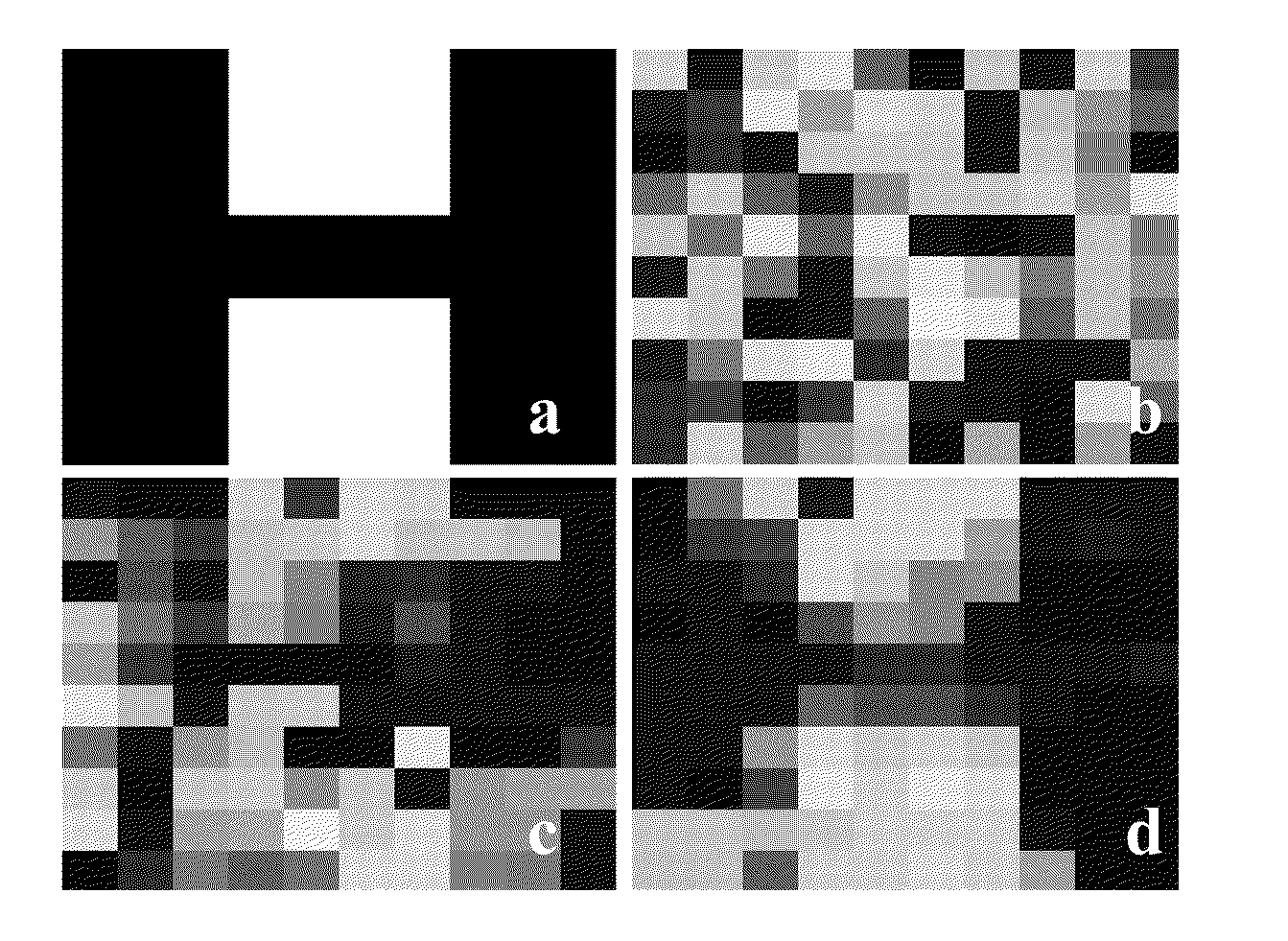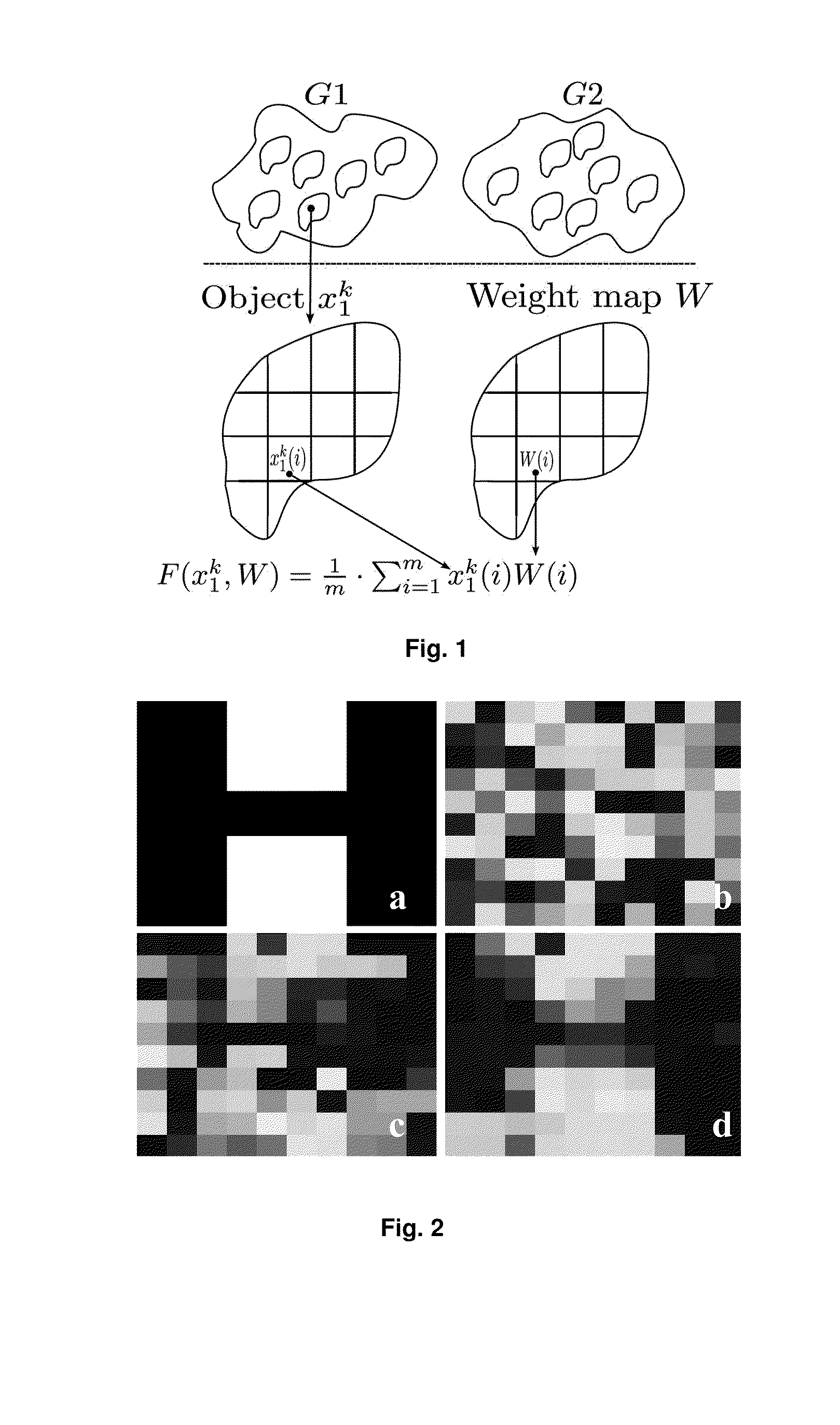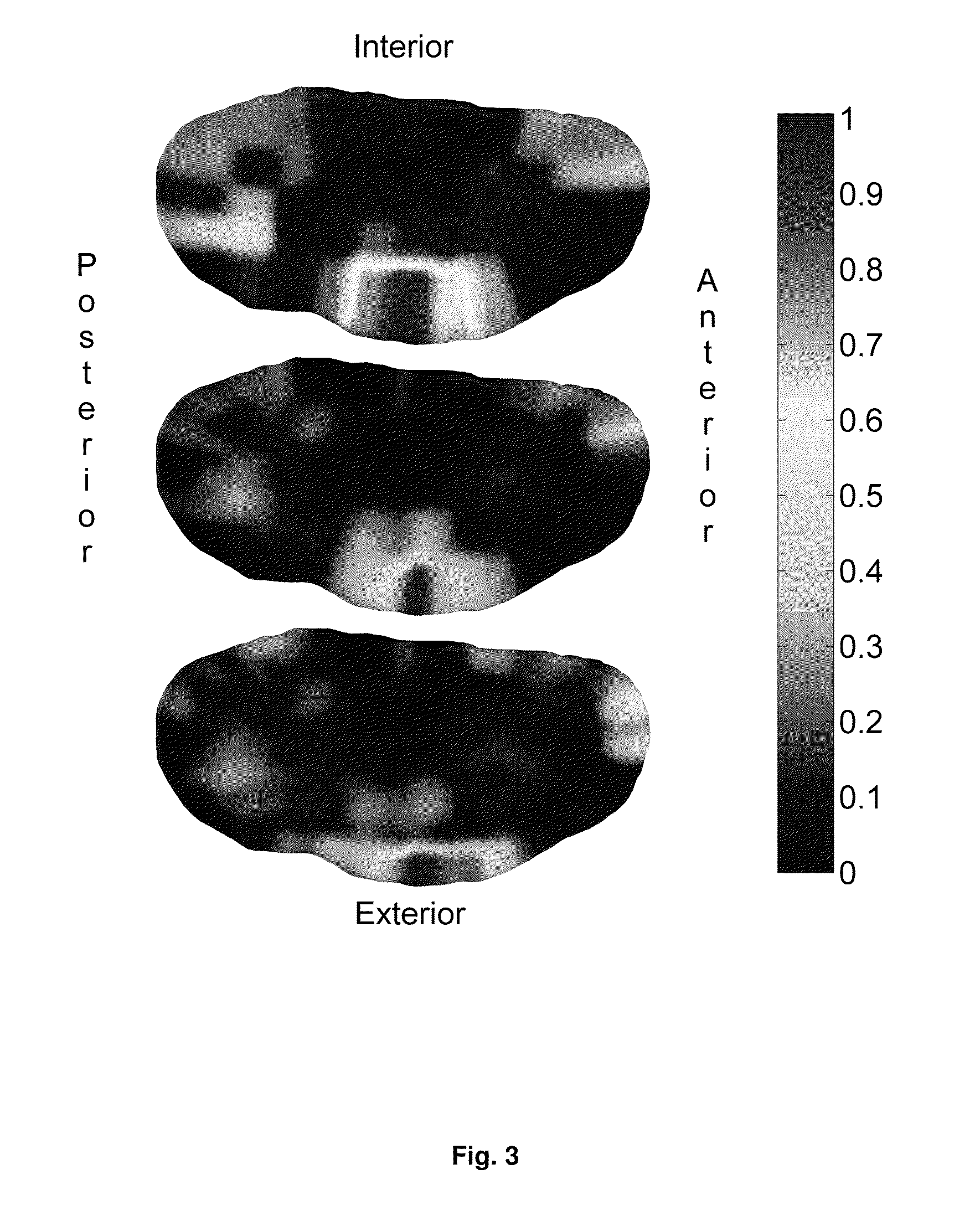Optimised region of interest selection
- Summary
- Abstract
- Description
- Claims
- Application Information
AI Technical Summary
Benefits of technology
Problems solved by technology
Method used
Image
Examples
Embodiment Construction
[0031]This invention utilises a novel methodology, having statistical underpinnings and incorporating prior knowledge of neighborhood relationships between features, for finding the most discriminative regions between patient groups. We formulate the problem in a smooth optimization scheme that minimizes the sample size required to discriminate two groups. For quantification methods that are to be used in clinical studies, the sample size is a crucial and specific end goal to optimize rather than more generic measures, such as classification accuracy. The sample size estimation determines the number of study participants and thereby the study feasibility and cost (and the patient burden). Given spatially normalized feature maps from objects belonging to two groups, the output of the method is a non-negative, real-valued weight map, where each weight reflects the local importance of the feature in separation of the two groups. We use the terms ‘soft regions’ or ‘areas’ to reflect the...
PUM
 Login to View More
Login to View More Abstract
Description
Claims
Application Information
 Login to View More
Login to View More - R&D
- Intellectual Property
- Life Sciences
- Materials
- Tech Scout
- Unparalleled Data Quality
- Higher Quality Content
- 60% Fewer Hallucinations
Browse by: Latest US Patents, China's latest patents, Technical Efficacy Thesaurus, Application Domain, Technology Topic, Popular Technical Reports.
© 2025 PatSnap. All rights reserved.Legal|Privacy policy|Modern Slavery Act Transparency Statement|Sitemap|About US| Contact US: help@patsnap.com



